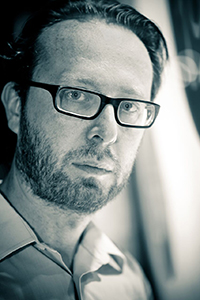MA 30 The Innovators: Roberto Prosseda
By Richard S. Ginell
December 6, 2016
Roberto Prosseda is an Italian pianist headed in several directions at once. Looking to his instrument’s past, he is busy trying to bring the ancient, little-known pedal piano—which allows its practitioners to play bass notes with their feet, much like an organist would—back into use. Mozart owned one, and the instrument was once a vehicle for Schumann (Six Etuden Op. 56, Four Skizzen, Op. 58), Gounod (Suite Concertante, Danse Roumaine, Concerto in E-Flat for Pedal Piano and Orchestra), Saint-Saëns (Concerto for Pedal Piano and Orchestra, which later became his Second Piano Concerto), Charles Alkan (11 Grands Préludes et un transcription du Messiah du Handel), and others well into the 19th century.
Though the pedal piano has long been out of favor, at least since the 19th century, Prosseda has been exploring its possibilities for the last decade or so. He made his first public appearance with it in the Cathedral of Forlì in northern Italy, September 13, 2011, performing the modern premiere of Gounod’s Pedal Piano Concerto with La Filarmonica Arturo Toscanini conducted by Jan-Latham Koenig.
He subsequently commissioned several new works for the instrument from composers like Ennio Morricone (Studio IV Bis from 2011) and Andrea Morricone (Hommage á JSB), and organists like Cameron Carpenter and Olivier Petry are increasingly trying their hands—and feet—on the instrument.
To help facilitate that, Prosseda is involved in the design of the 37-pedal Pinchi Pedalpiano System, which works as an attachment between two grand pianos.
Call that looking to his instrument’s future.
“What I hope is to give a new creative tool to composers and artists,” Prosseda told The Wall Street Journal in an interview. “Because the idea of extending the piano, of having a piano that can do more things, has to be for artistic reasons—not just showmanship.”
Also in 2012, Prosseda started using TeoTronico, a system that controls via MIDI a grand piano onstage. With this setup, he gives lecture-concerts showing young audiences the differences between reproduction and interpretation. First, the TeoTronico acts like a robot that plays the music as written, following all indications in the score. Then Prosseda plays the same piece on the piano and adds his own interpretative touches like rubato, giving the music a “human” feeling. Later on in the concert, the TeoTronico is programmed to imitate the styles of great pianists of the past like Rachmaninoff, Busoni, and Hofmann, as heard on their piano rolls.
Clearly this is a pianist who isn’t content to merely recirculate the repertoire.
Copyright © 2025, Musical America
